Good things come in layers–just ask anyone who’s eaten a good layer cake, or tried Chef Jade’s famous 7-layer tortilla dip (come to my next Super Bowl party, you’ll get some). One of the most famous layered dishes, is of course, lasagne. I’ve been obsessed with this dish ever since I watched Garfield swallow whole trays of it on the Saturday morning cartoon. So it’s with great pleasure that I take a deep dive into Italy’s most iconic layered dish.
Lasagne or Lasagna?
A quick note on spelling: here in the U.S.,“Italy’s layered favorite” is often called “lasagna.” But in this article, I chose to spell it “lasagne,” because, well, that’s the proper Italian! As I found out during my trip, “lasagna” refers to a single noodle, while “lasagne” is a plural word that indicates the whole dish. So calling it “lasagna” is a bit like calling spaghetti “spaghetto” (yup, that’s the singular form) or linguini “linguino.” As you can see, that simply won’t do. OK, enough of the grammar lesson; back to the deliciousness!
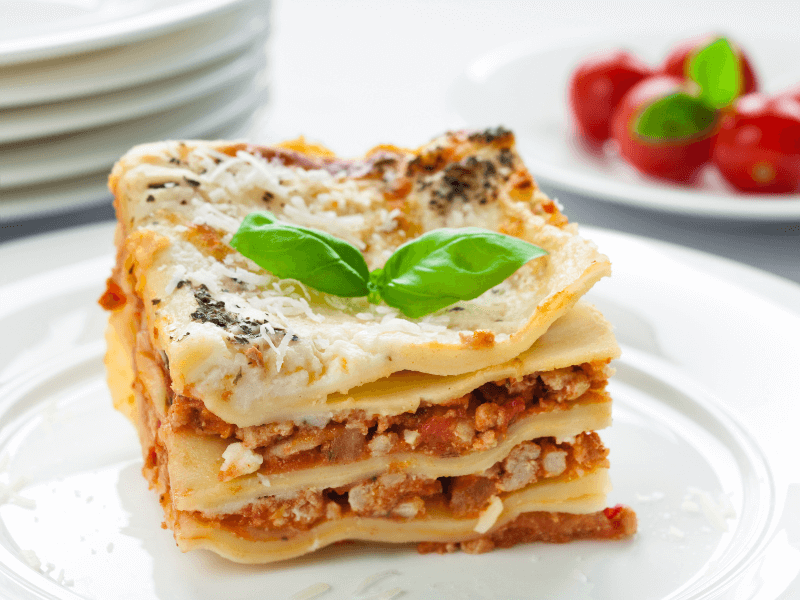
Ancient Origins
Not only is lasagne one of Italy’s most famous dishes; it’s also one of its oldest. As I learned during my trip, the roots of lasagne can be traced back to ancient times. The earliest evidence of a pasta-like dish comes from ancient Greece, where layers of dough were baked with meat and sauce. During my time in nearby Greece, I kept running into lasagne-like dishes, like pastitsio, which layers baked pasta, ground meat, and bechamel sauce.
However, it was the ancient Romans who truly developed the concept of layered pasta. Known as “lasana” or “lasanum,” their version consisted of sheets of pasta dough interleaved with meat or vegetable fillings. This hearty dish became popular among the Roman elite, and variations of lasagne spread throughout the Roman Empire. The Roman Empire introduced the world to a lot of useful things (concrete, anyone?), but I’d say lasagne has to be pretty close to the top of the list.

Medieval Transformations
After the fall of the Roman Empire, lasagne went through a period of transformation during the Middle Ages. The use of pasta declined, giving way to other ingredients like bread and meat. Lasagne-like dishes began to incorporate cheese, spices, and herbs, showcasing the influence of Arab and Mediterranean flavors. In Italy, different regions developed their own unique variations, such as the lasagne verde from Emilia-Romagna, made with spinach-infused pasta (when prepared with vegan noodles, cheeses, and proteins, this is my favorite variation).
Renaissance and Modern Development
During the Renaissance, all things Italian surged in popularity, including lasagne (funny how my history books never mentioned lasagne alongside Michaelangelo, and Leonardo Da Vinci). Cookbooks from the 16th century, such as Bartolomeo Scappi’s “Opera,” (highly recommended for my fellow food history buffs) featured various lasagne recipes. The introduction of tomato sauce from the New World in the 16th century revolutionized lasagne, providing a flavorful foundation that remains a staple ingredient today. As I often say, food almost always gets better when it crosses cultures–though I still can’t get behind the ramen burger.
Here in the U.S, lasagne’s popularity increased with the influx of Italian immigrants in the late 19th and early 20th centuries. Affordable, easy to prepare in bulk, and pretty tasty the next day, lasagne soon became a staple in American kitchens…and on certain American cartoons.

Contemporary Delights and Global Influence
Today, lasagne has evolved into a versatile dish with countless regional and international variations. Traditional Italian lasagne often features Bolognese sauce and a combination of béchamel and Parmesan cheese. While this is the variation I encountered most often during my travels throughout Italy, creative interpretations have emerged, incorporating seafood, vegetables, and even dessert-like ingredients. Lasagne’s popularity has spread worldwide, adapting to local tastes and ingredients. In America, lasagne may be layered with ricotta and mozzarella cheese, while in Mexico, the flavors of enchiladas or mole are incorporated.
Top 5 Lasagnes in Rome
Since, as we’ve established, lasagne has Roman origins, what better place for a Top 5 than the Eternal City? And with the delicious lasagne these five spots are whipping up, you can expect them to stand the test of time.
Osteria del Sostegno
You might have seen the word osteria in Italian restaurant names here in the States. It typically refers to a simpler, more affordable restaurant, where the food unpretentiously makes its presence felt. This is definitely the case at Osteria del Sostegno. Located near the Pantheon, this is a popular spot for locals and tourists alike. Alongside a variety of Italian dishes, their lasagna is well-regarded for its rich flavors and generous portions.
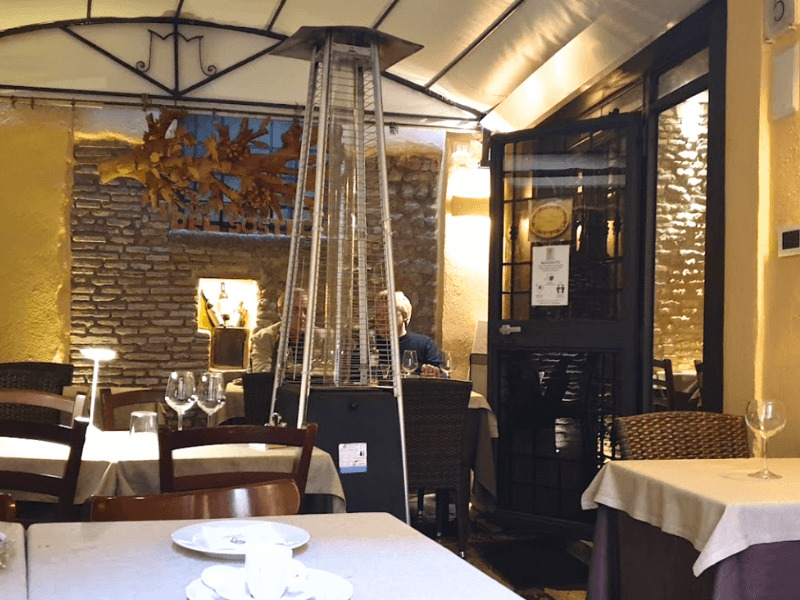
Osteria Bonelli
Another great casual joint, Osteria Bonelli is a charming and authentic eatery in the Trastavere neighborhood (a funky, bohemian area on the banks of the Tiber–just my speed). Comfort food reigns supreme here, and their lasagna is highly regarded, made with quality ingredients and prepared in a traditional style.
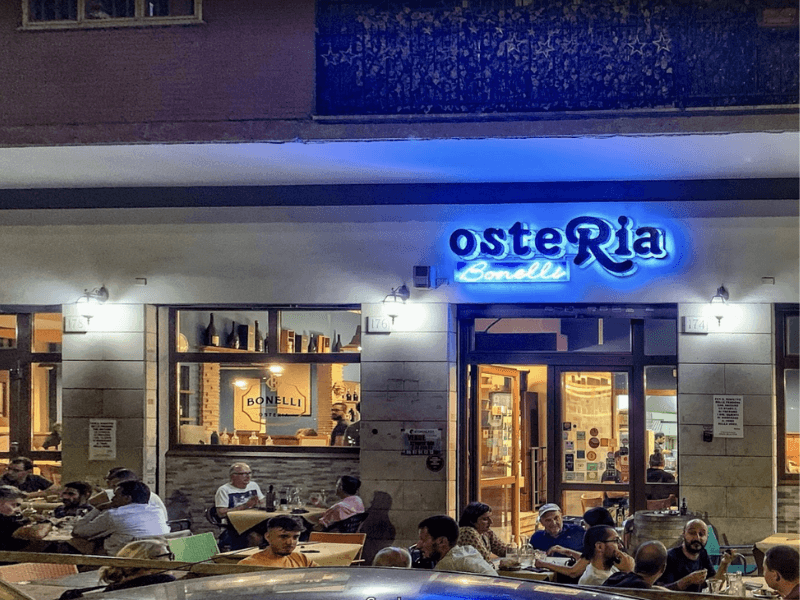
Trattoria da Danilo
You may have seen the word trattoria here in the States as well. These tend to be a little more upscale than osterias (though still less formal than ristorantes). I’m usually on an osteria budget, but a girl’s gotta splurge sometimes. Trattoria da Danilo, is worth the splurge for delicious scratch-made lasagne.
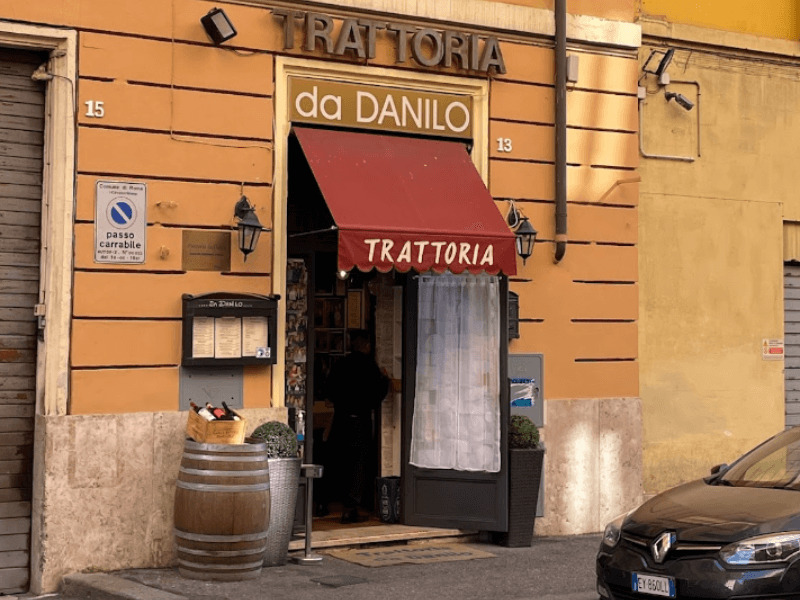
Roscioli
Roscioli is a little bit of everything: equal parts deli, bakery, and restaurant. In short: my kind of spot. And this classic joint is known for its lasagne, which – for all my vegetarian friends out there – can be served without meat.
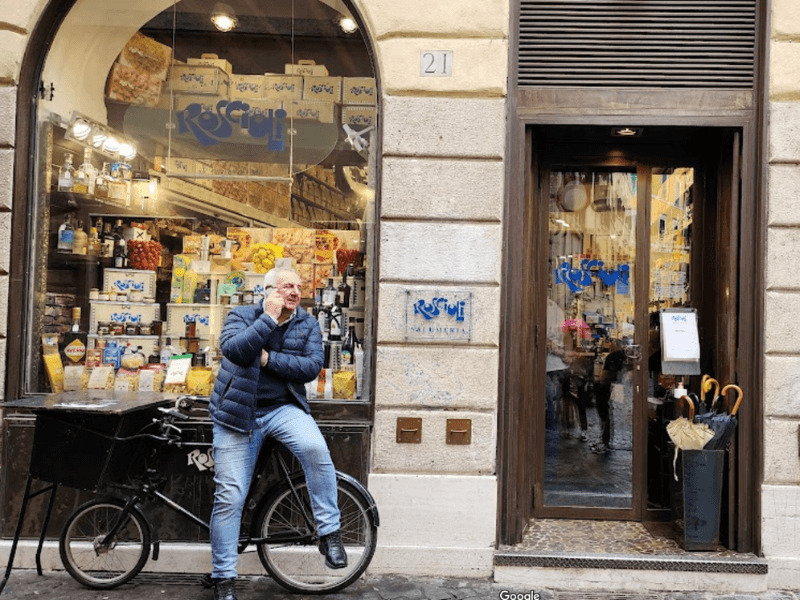
Rifugio Roman
Rifugio Romano is a trattoria that specializes in vegan dishes. In other words, it’s exactly what I was looking for when I needed to satisfy my lasagne craving in Rome. And I am happy to report that the lasagne here does not disappoint, even if you are a strict carnivore.
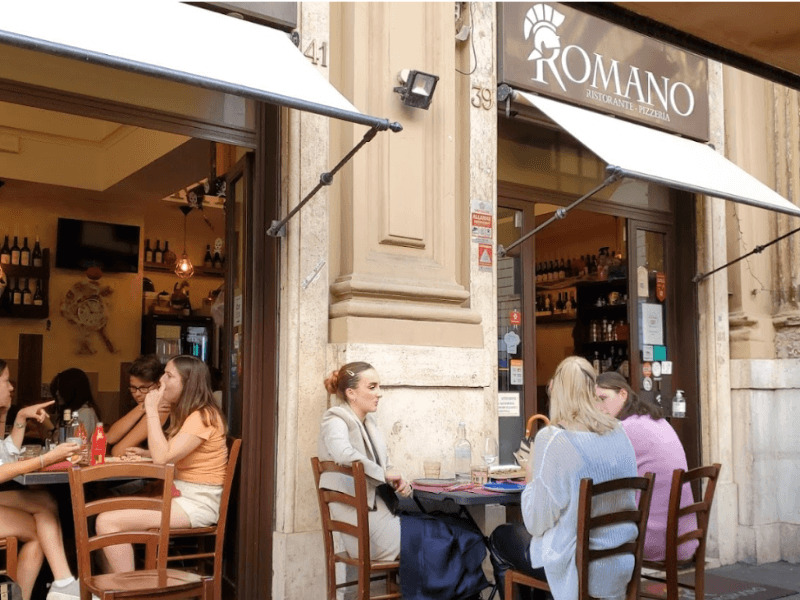
Upping My Lasagne Game
Some foods have a way of bringing people together, and lasagne makes an especially great comfort food to share with friends and family. That’s how the Romans do it, and after my trip to Rome, I’m ready to perfect my vegan lasagne and invite my friends over to sample the results. Check out my recipe and feel free to do the same.
If you enjoyed this article or have suggestions on how we can improve it, please leave us a comment below. Also, make sure to check out other articles I’ve created or stories I’ve written about food culture – here.

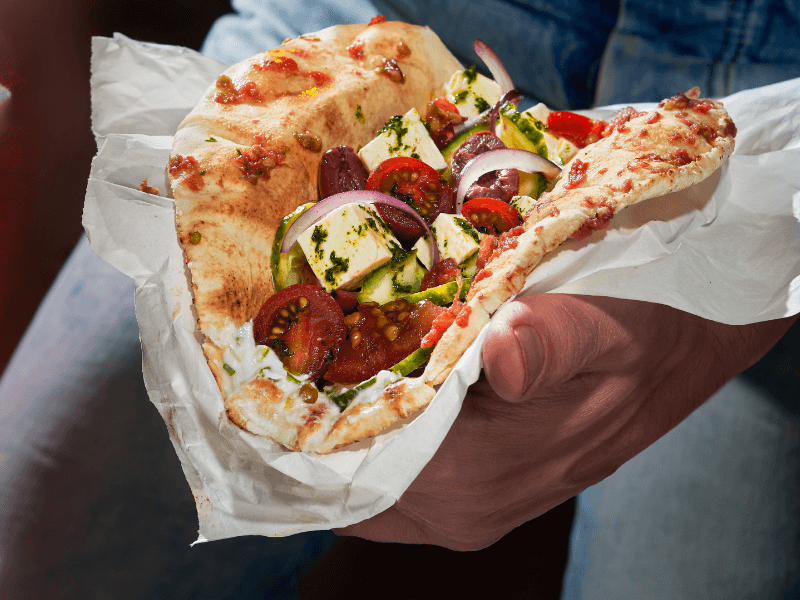






Recetas buenísimas los felicito.